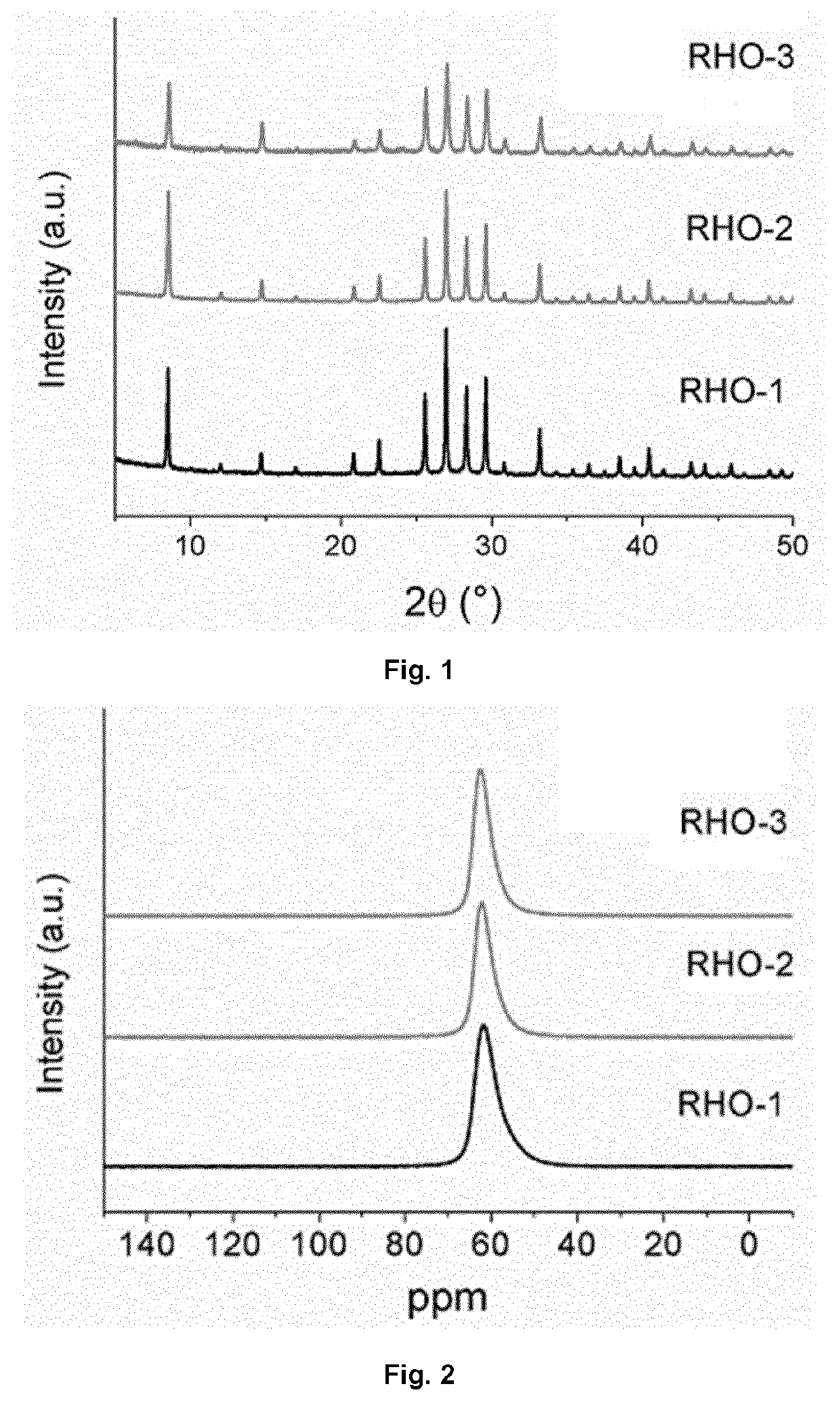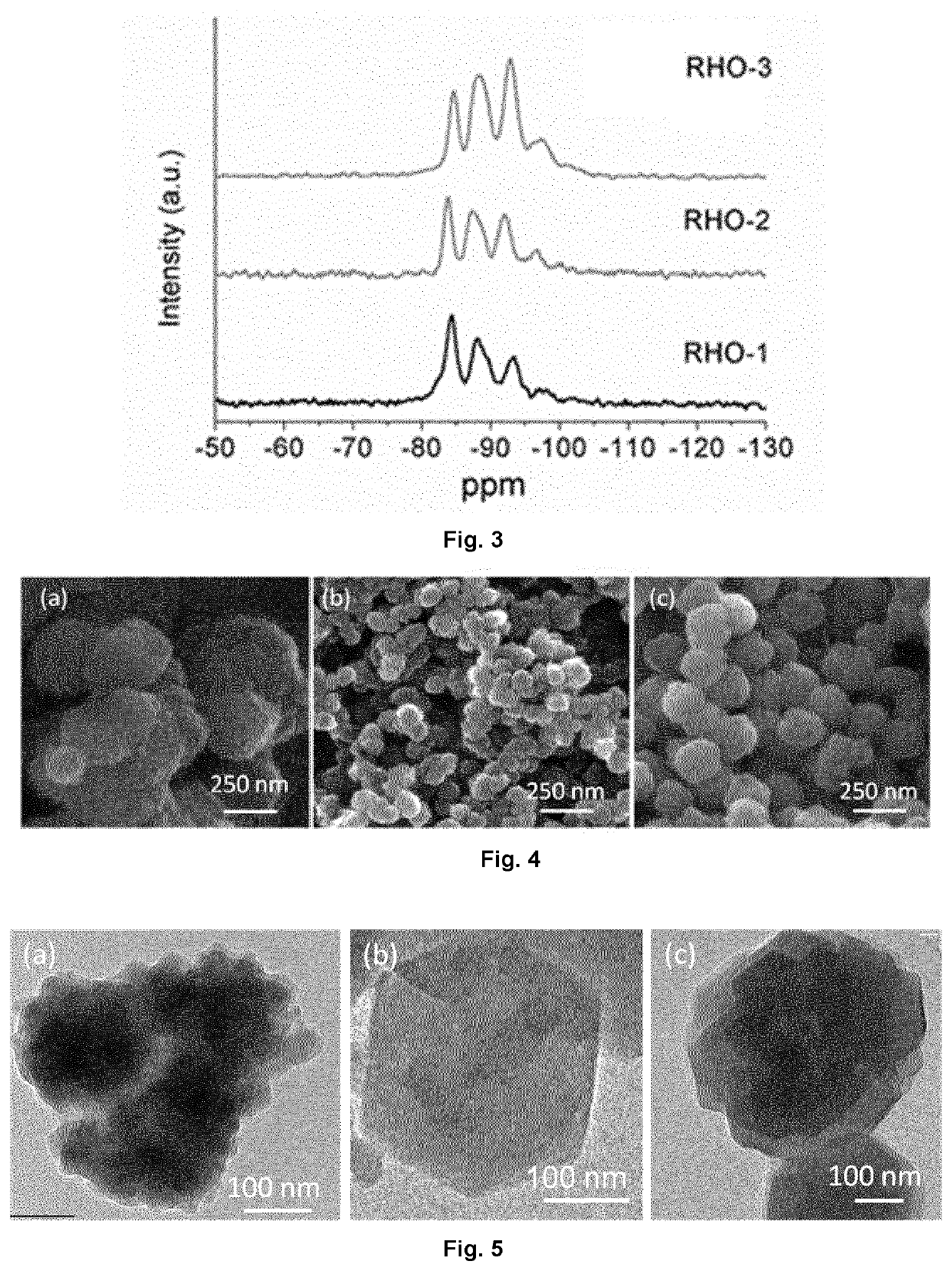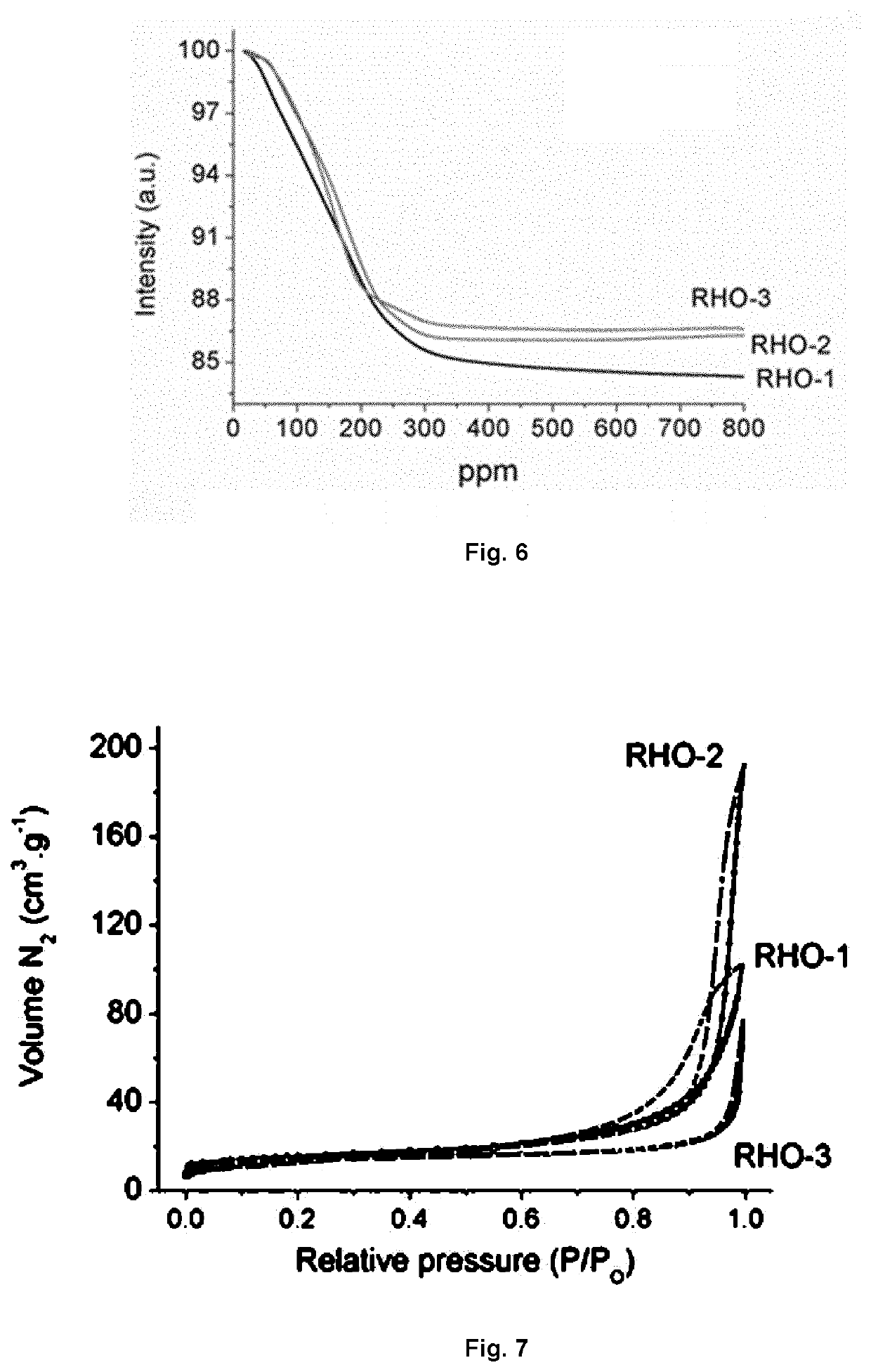Rho-type zeolite, precursors thereof, methods for making the same and use of the zeolite as sorbent for co2
a technology of rhotype zeolites and precursors, which is applied in the field of rhotype zeolites, can solve the problems of reducing the accessibility of nitrogen (with a diameter of 3.6 ) that is used, unable to achieve methane, and unable to achieve the full use of their potential
- Summary
- Abstract
- Description
- Claims
- Application Information
AI Technical Summary
Benefits of technology
Problems solved by technology
Method used
Image
Examples
example 1
Preparation of Aggregated RHO-Type Zeolite (RHO-1)
[0320]A first aqueous suspension comprising aluminate was prepared by mixing 516 mg of sodium aluminate in 3 g of double-distilled H2O. This suspension is clear.
[0321]A second aqueous suspension comprising silicate was prepared by mixing 5.0 g of LUDOX AS40 with 1.82 g of sodium hydroxide and 0.588 g of caesium hydroxide. The reaction is a gel. After vigorous shaking by hand, the reaction turns into a clear suspension thanks to its exothermic character. The second aqueous suspension was stirred at room temperature (i.e., 25° C.).
[0322]The first aqueous suspension was added dropwise to the second aqueous suspension. During the addition, the second aqueous suspension was maintained at room temperature while being vigorously stirred. A clear aqueous suspension was obtained.
[0323]The resulting amorphous precursor in the clear aqueous suspension has the following molar composition:
10 SiO2: 0.8 Al2O3: 8 Na2O: 0.58 Cs2O: 100 H2O
[0324]The pH...
example 2
Preparation of Monodispersed RHO-Type Zeolite (RHO-2)
[0333]A first aqueous suspension was prepared by mixing 516 mg of sodium aluminate in 3 g of double-distilled H2O. This suspension is clear.
[0334]1.82 g of sodium hydroxide and 588 mg of caesium hydroxide were added to the first aqueous suspension. During the addition, the first aqueous suspension was maintained at room temperature (i.e. 25 ° C.) while being vigorously stirred. The stirring at room temperature was continued for at least 2 hours and afforded a clear aqueous suspension.
[0335]A second aqueous suspension comprising a silicate, namely 5 g of LUDOX AS40, was added dropwise. During the addition, it was maintained at room temperature while being vigorously stirred.
[0336]The resulting amorphous precursor in the clear aqueous suspension has the following molar composition:
10 SiO2: 0.8 Al2O3: 8 Na2O: 0.58Cs2O: 100 H2O
[0337]The pH of said clear aqueous suspension is 12.
[0338]The clear aqueous suspension was then aged by magne...
example 3
Preparation of Higher Silica Containing-RHO-Type Zeolite (RHO-3) in Monodispersed Form
[0346]A first aqueous suspension was prepared by mixing 516 mg of sodium aluminate in 3 g of dd H2O. This suspension is clear.
[0347]1.55 g of sodium hydroxide and 336 mg of caesium hydroxide were added to the clear suspension. During the addition, the first aqueous suspension was maintained at room temperature (i.e. 25 ° C.) while being vigorously stirred. The stirring at room temperature was continued for at least 2 hours and afforded a clear aqueous suspension.
[0348]A second aqueous suspension comprising a silicate, namely 5 g of LUDOX AS40, was added dropwise. During the addition, it was maintained at room temperature while being vigorously stirred.
[0349]The resulting amorphous precursor in the clear aqueous suspension has the following molar composition:
10 SiO2: 0.8 Al2O3: 6.6 Na2O: 0.33 Cs2O: 100 H2O (III)
[0350]The pH of said clear aqueous suspension is 12.
[0351]The resulting clear aqueous s...
PUM
| Property | Measurement | Unit |
|---|---|---|
| specific surface area | aaaaa | aaaaa |
| molar ratio | aaaaa | aaaaa |
| molar ratio | aaaaa | aaaaa |
Abstract
Description
Claims
Application Information
 Login to View More
Login to View More - R&D
- Intellectual Property
- Life Sciences
- Materials
- Tech Scout
- Unparalleled Data Quality
- Higher Quality Content
- 60% Fewer Hallucinations
Browse by: Latest US Patents, China's latest patents, Technical Efficacy Thesaurus, Application Domain, Technology Topic, Popular Technical Reports.
© 2025 PatSnap. All rights reserved.Legal|Privacy policy|Modern Slavery Act Transparency Statement|Sitemap|About US| Contact US: help@patsnap.com



